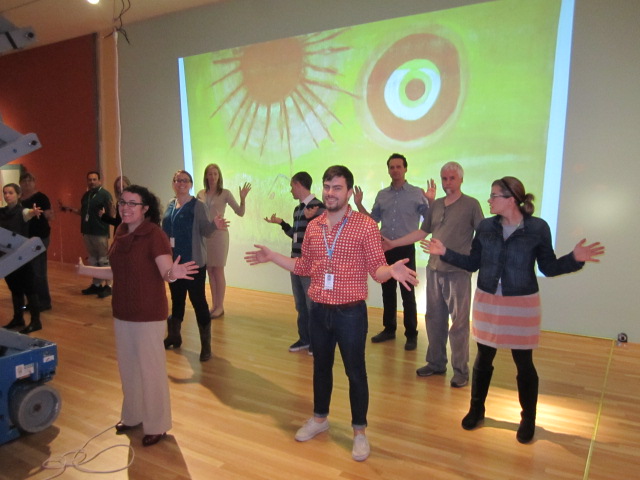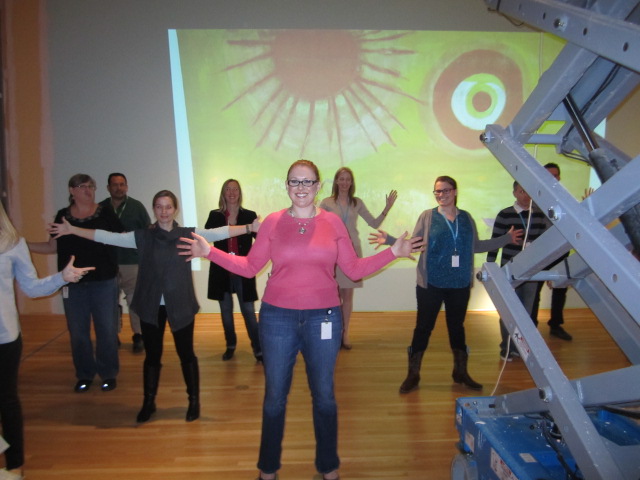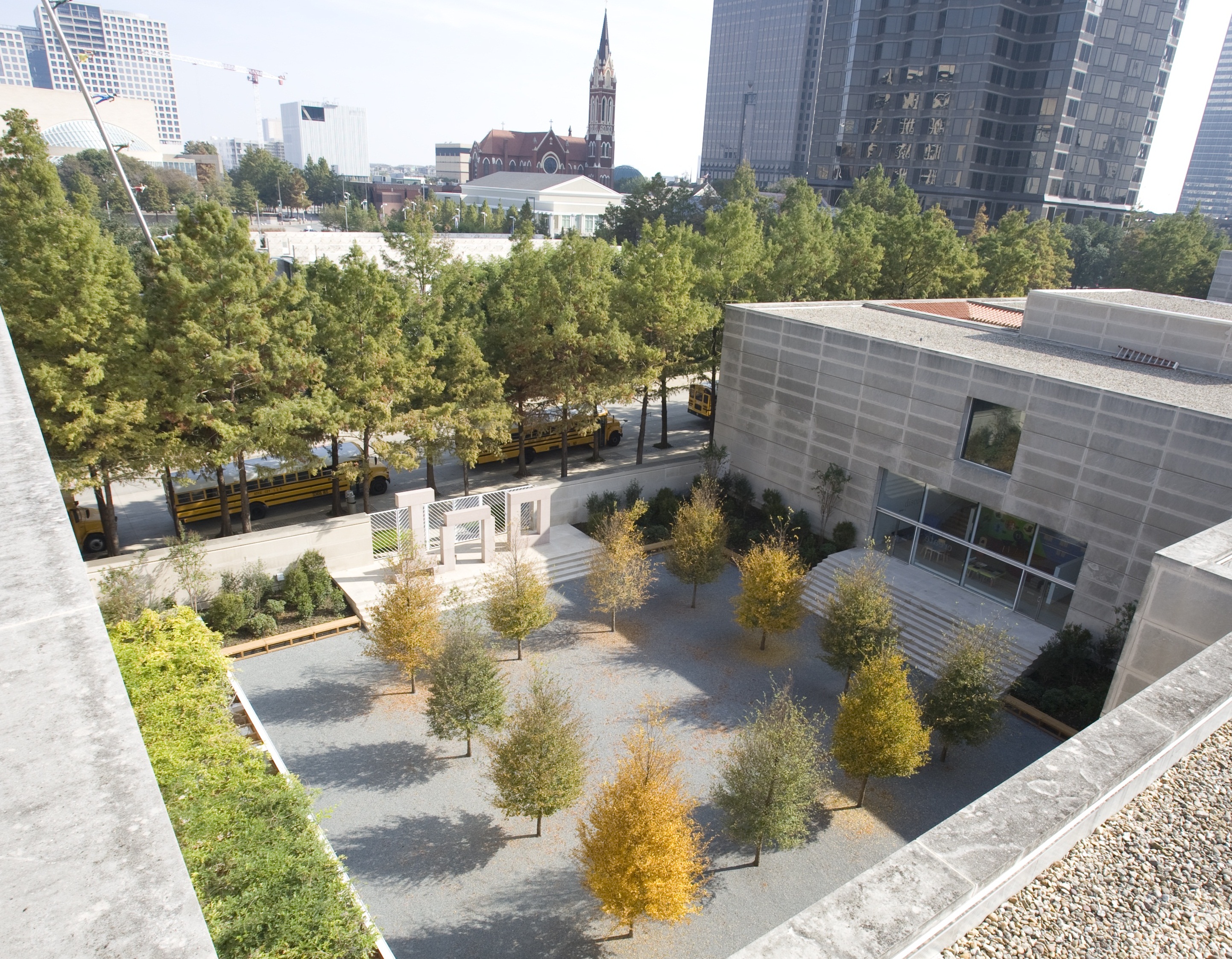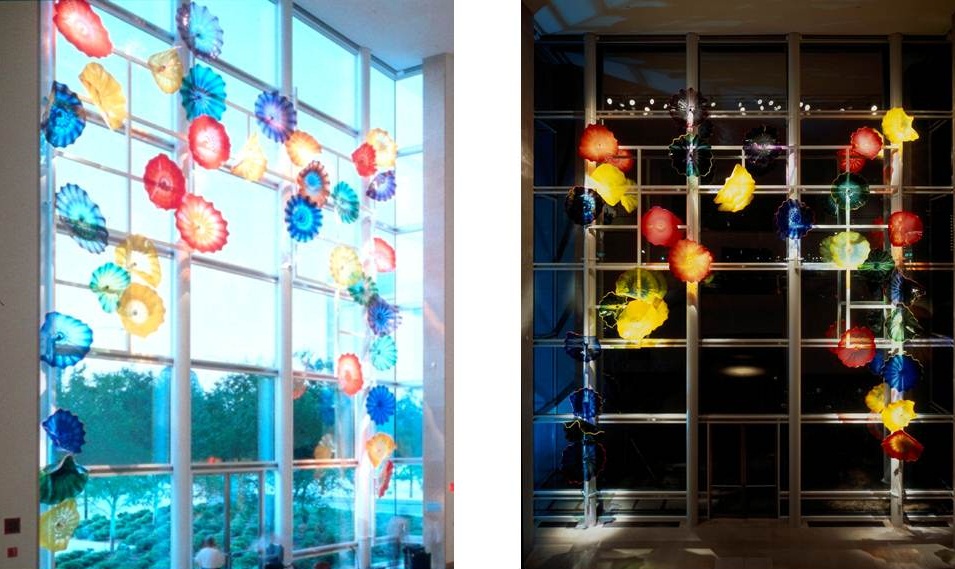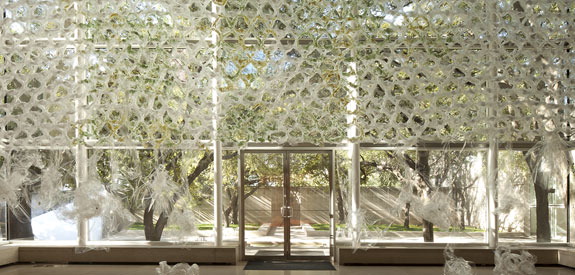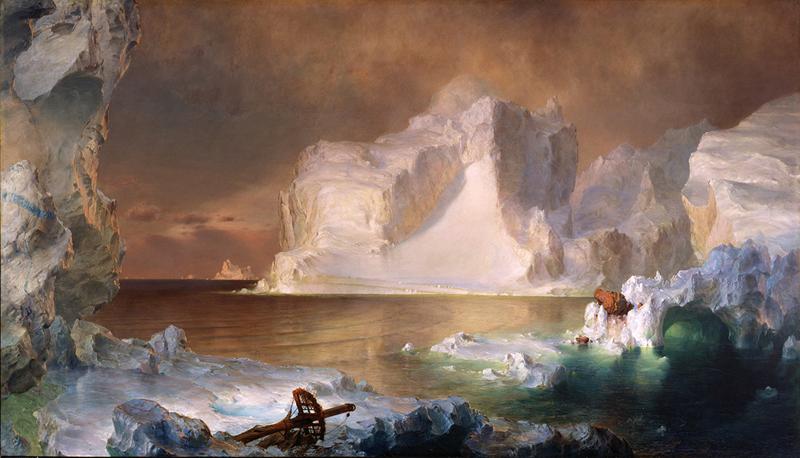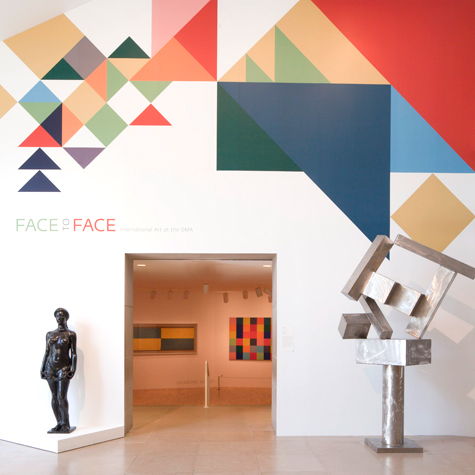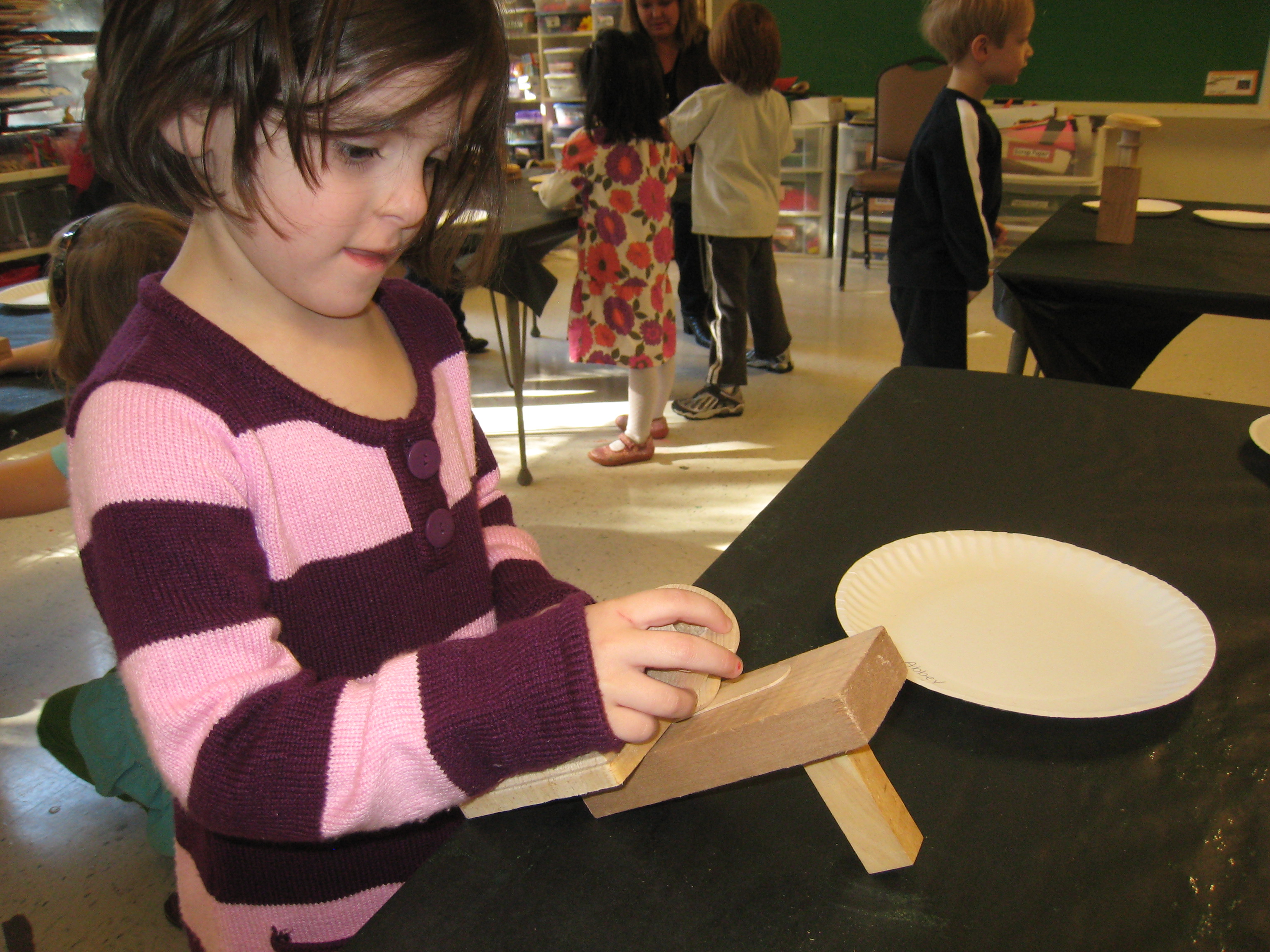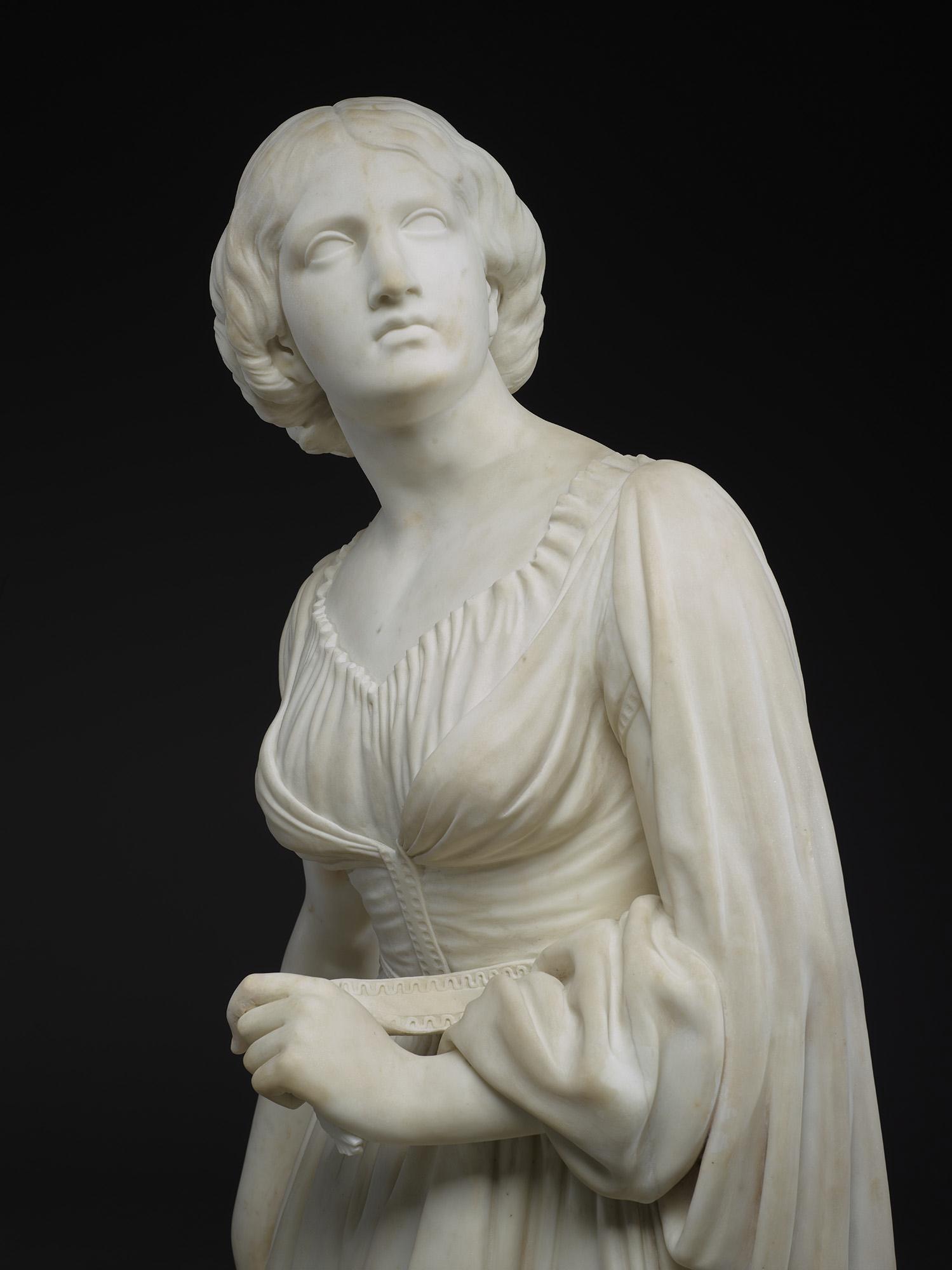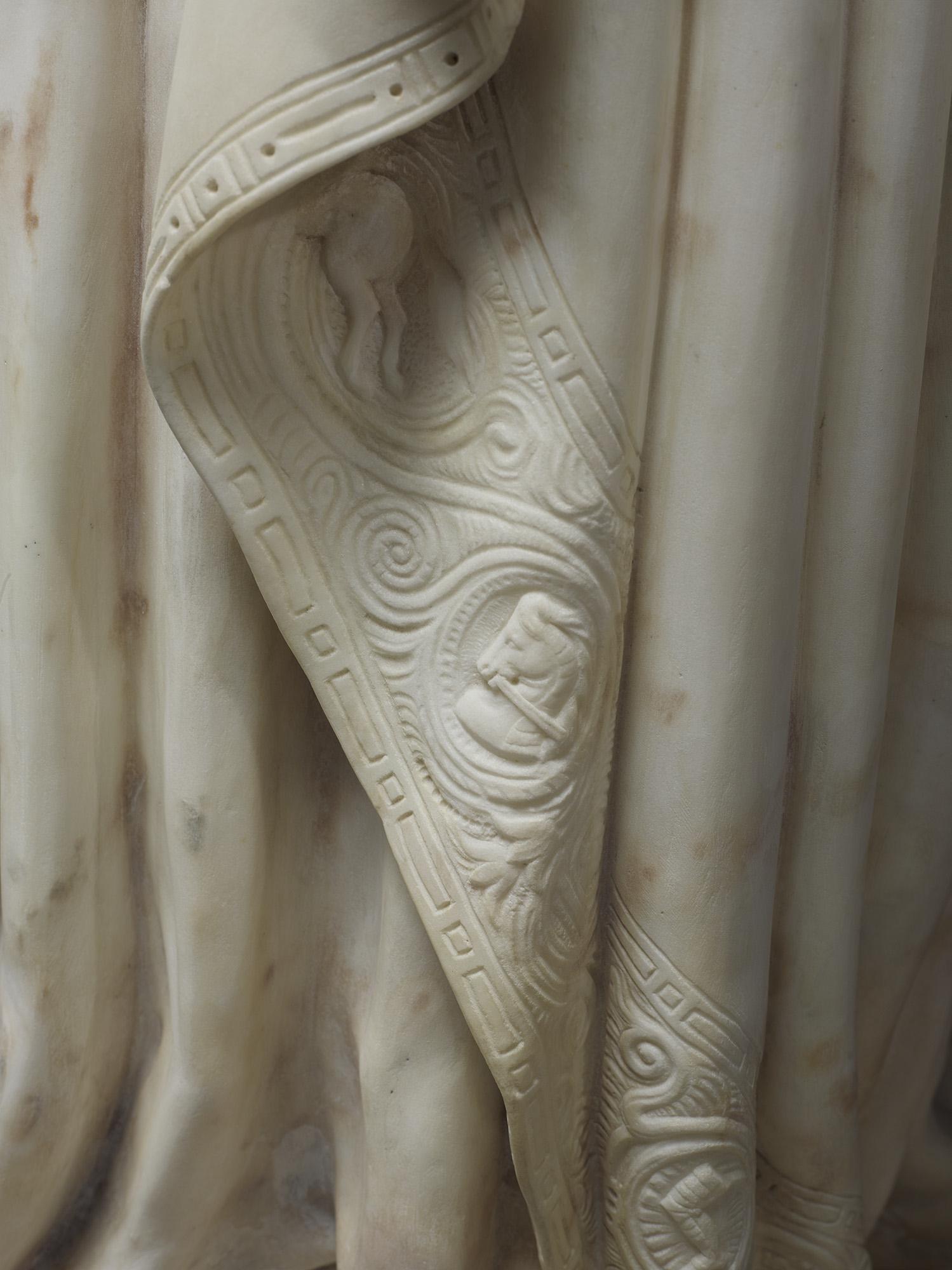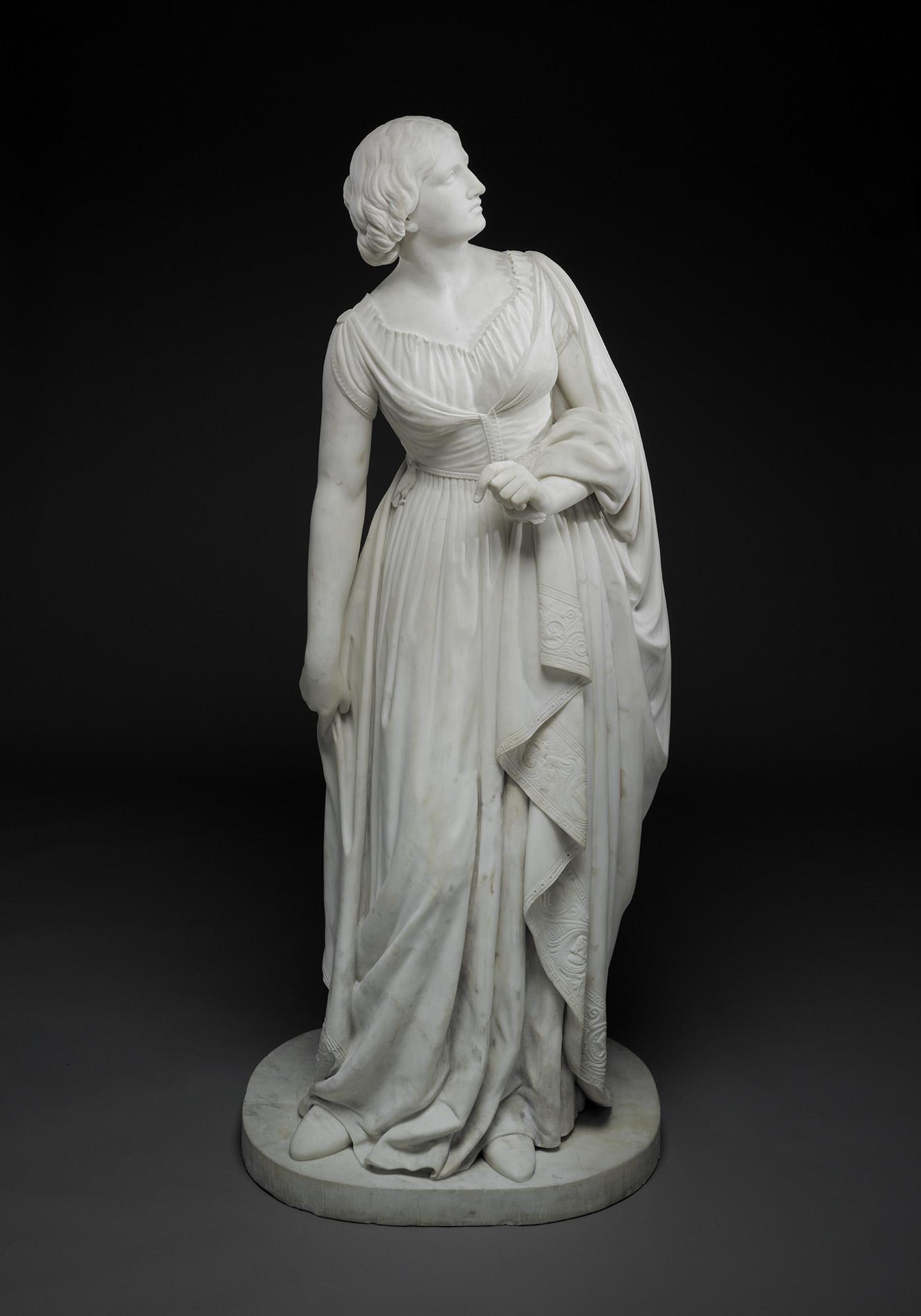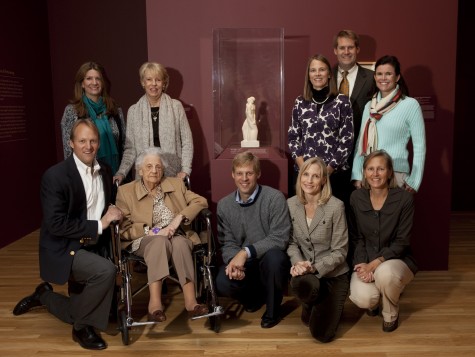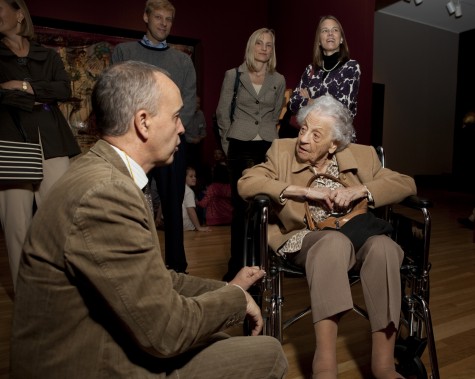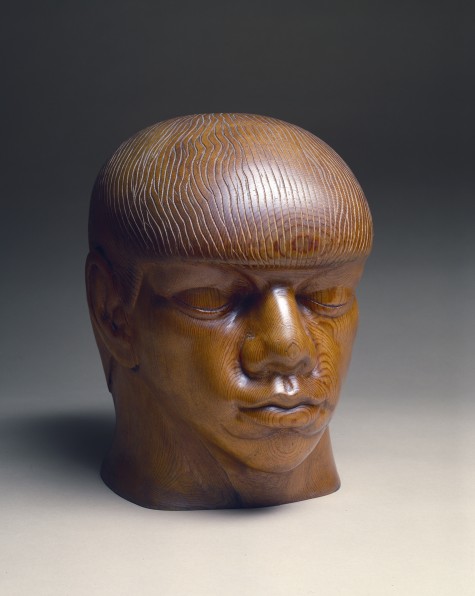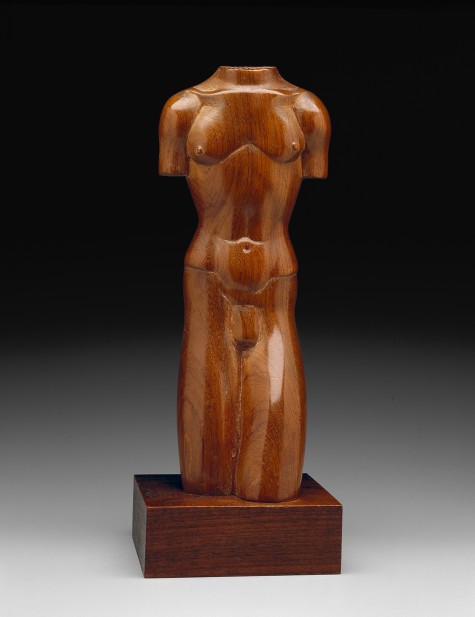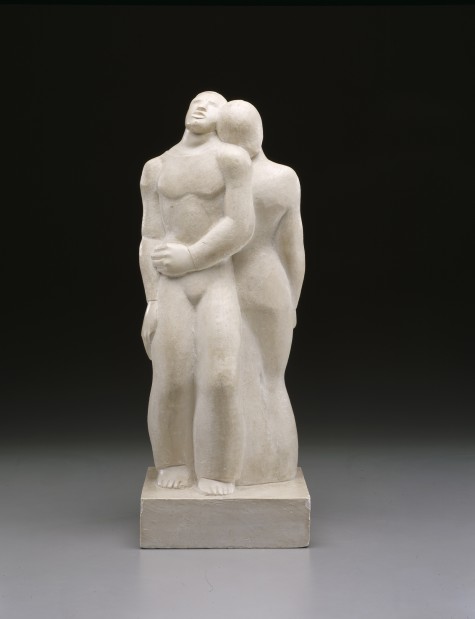Chagall: Beyond Color opens on Sunday, February 17, and the highlight of the exhibition is sure to be the costumes designed by Chagall in 1942 for the production of the ballet Aleko. The ballet’s première took place in September 1942 in Mexico City, followed by the Ballet Theatre of New York production, and the costumes have not been seen in the U.S. since. Recently, DMA staff whipped out their jazz hands and did their best mannequin impersonations to assist in the installation of the Aleko costumes.
Posts Tagged 'sculpture'
Five, Six, Seven, Eight
Published January 14, 2013 Behind-the-Scenes , Exhibitions ClosedTags: Aleko, ceramic, Chagall: Beyond Color, Collage, costume, Dallas Museum of Art, Marc Chagall, painting, sculpture
Welcome to the Neighborhood!
Published November 8, 2012 Uncategorized ClosedTags: Arts District, Chihuly, Community, Community Connection, Courtyard, Dallas Museum of Art, exhibition, Installation, Klyde Warren Park, sculpture, Sculpture Garden, works of art
It’s another gorgeous sunny day in November here in Dallas. This warm and temperate fall weather could not have been more perfect for the recent opening of the new Klyde Warren Park right across the street from the Dallas Museum of Art. Just two weeks ago, this new urban green space celebrated it’s grand opening with over fifty free programs and a whopping 44,000 excited visitors. The DMA also participated in the lively festivities, offering outdoor art-making workshops and even a re-enactment of the ancient Maya ballgame in connection with our exhibition The Legacy of the Plumed Serpent in Ancient Mexico. The park continues to provide free daily programs, and has already become a populated community space beloved by the locals.
 This 5.2 acre deck park features a children’s playground, a gated dog park, putting greens, ping-pong tables, a reading area, and plenty of open green grass to play or picnic on. With something for absolutely everyone, the park brings people together from all walks of life.
This 5.2 acre deck park features a children’s playground, a gated dog park, putting greens, ping-pong tables, a reading area, and plenty of open green grass to play or picnic on. With something for absolutely everyone, the park brings people together from all walks of life.
.
If you’re taking advantage of this wonderful weather and want to explore some of the DMA’s outdoor spaces, we have a couple beautiful spots for you to check out as well. For a tranquil stroll surrounded by trees, waterfalls, and life size sculptures, I highly reccomend heading out to the Sculpture Garden: it’s the perfect place to find inspiration or relaxation.
The Fleischner Courtyard is another great outdoor space to enjoy some sun or shade.
.
There are a few special areas of the museum where the archituecture allows for the exterior and interior space to interact, creating a sense of the natural world from the inside. One of my favorite such places is the Atrium Cafe, where colorful glass Chihuly flowers float in the frame of the floor-to-ceiling window. With the colors made vibrant by sunlight and romantic by moonlight, it’s a breath-taking sight at any time of the day.
The recent Karla Black installation titled Necessity seems to also create a similar relationship between man-made objects and nature. Cascading down from the ceiling in front of the glass doors to the Sculpture Garden, the cellophane of this large-scale sculpture catches the natural light and produces a sparkling, rippling effect much like a stream or waterfall. The holes in the sculpture and translucent material allow for glimpses of the trees and nature just beyond the doors of the artwork. While standing in the concourse it’s easy to feel as if you’re transported to an outdoor oasis.
.
I hope you all enjoy this weather while it lasts- you now know where I go to soak up the sun!
Hannah Burney
Community Teaching Programs Assistant
Artworks used:
- Dale Chihuly, Hart Window, 1995, Dallas Museum of Art, gift of Linda and Mitch Hart
- Karla Black, Necessity, 2012, Courtesy Stuart Shave/Modern Art, London and Galerie Gisele Captain, Cologne
Seldom Scene: Karla Black at the DMA
Published October 15, 2012 Behind-the-Scenes , Exhibitions , Installation , Uncategorized ClosedTags: Concentrations, Dallas Museum of Art, Karla Black, Scottish art, sculpture
Scottish artist Karla Black will open her first solo project at a U.S. museum this Friday at the DMA. For Karla Black: Concentrations 55, the artist has created two sculptures for the DMA’s Hoffman Gallery and South Concourse. See images from the installation process below, and meet Black and see her work at our Late Night this Friday. She will discuss her exhibition at 7:00 p.m. in the Hoffman Gallery.
Back to School: From the Classroom to the DMA Collection
Published September 11, 2012 works of art 2 CommentsTags: Art, collections, connections, Contemporary Art, Dallas Museum of Art, interdisciplinary, landscapes, literature, painting, sculpture, Sculpture Garden, students
Now that all the kiddos are settled back into school, I began to think about how the Museum‘s collection could inspire them to keep learning outside the classroom. With the most common school subjects in mind, I decided to find works of art that might help them with their studies. Check out my pairings below.
Math
Upon first glance, it’s hard to tell if this large scale sculpture is symmetrical or asymmetrical. It takes a careful walk all the way around the work of art to find out.
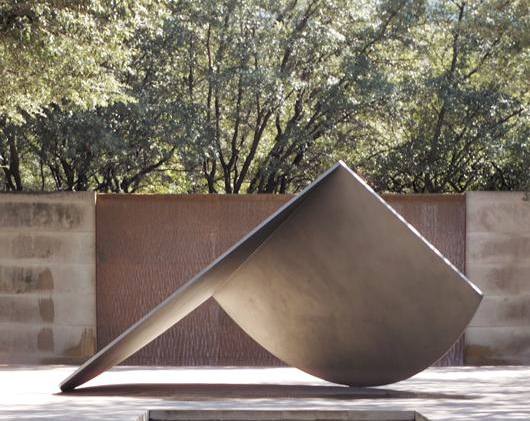
Untitled, Ellsworth Kelly, 1982-1983, Dallas Museum of Art, commission made possible through funds donated by Michael J. Collins and matching grants from The 500, Inc., and the 1982 Tiffany & Company benefit opening
History
An historical figure, period, or event is often the subject of a work of art. This particular work features all three. Some of the imagery in Skyway includes President Kennedy and images of space exploration. Overall, the haphazard, overlapping composition captures the tumultuous time of change in the Sixties. What else does this colorful collage tell you about the Sixties?
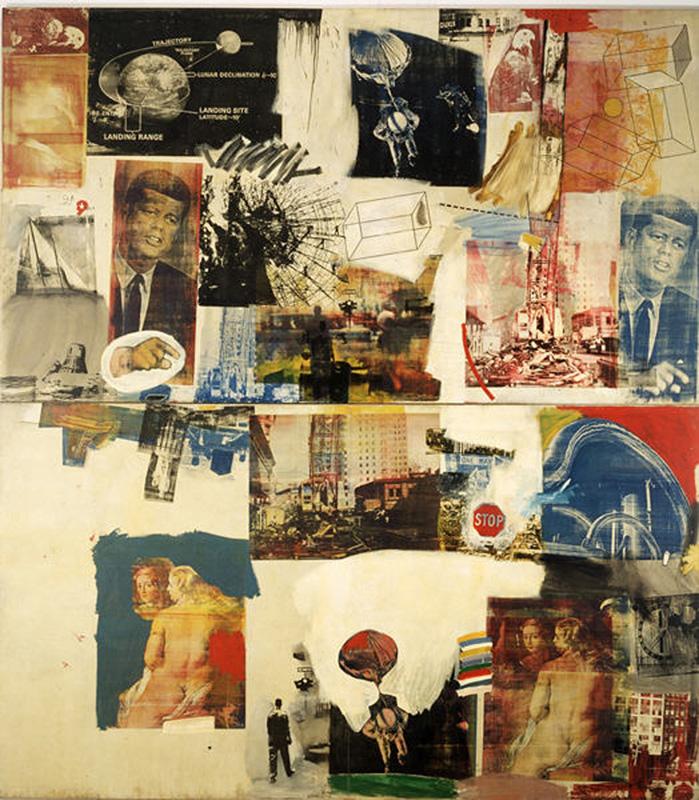
Skyway, Robert Rauschenberg, 1964, Dallas Museum of Art, The Roberta Coke Camp Fund, The 500, Inc., Mr. and Mrs. Mark Shepherd, Jr. and General Acquisitions Fund
English
Some works of art are inspired by literature, like Cinderella at the Kitchen Fire. While it’s easy to find Cinderella in this beautiful work of art, it’s not as easy to tell which part of the Cinderella story is being depicted. Come to the Museum to get a closer look at all the details a photograph can’t capture, so you can guess which part of the classic fairy tale this could be. I’ll give you a big hint: there’s more than one right answer!

Cinderella at the Kitchen Fire, Thomas Sully, 1843, Dallas Museum of Art, gift of the Pauline Allen Gill Foundation
Geography
From the icy waters of the North Atlantic to the rolling hills of the French-Italian Riviera, wandering through the Museum galleries can take you on a trip around the world to a variety of climates and terrains. How many new places can you discover on your next visit?
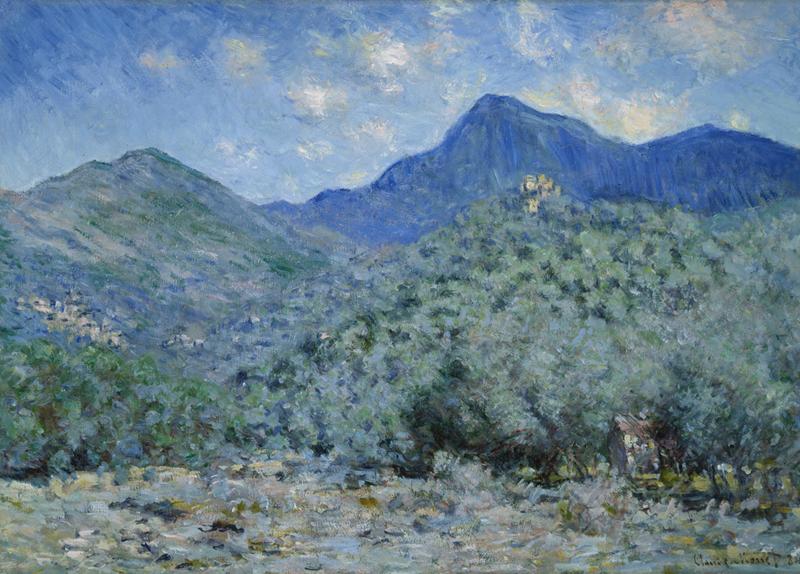
Valle Buona, Near Bordighera, Claude Monet, 1884, Dallas Museum of Art, gift of the Meadows Foundation Incorporated
Homework
Hopefully these collection connections will make learning in the Museum more fun for you and the kiddos than studying is for this little boy:

The First Thorns of Knowledge (Les premières épines de la science), Hugues Merle, 1864, Dallas Museum of Art, gift of the Meadows Foundation Incorporated
Hannah Burney
Community Teaching Programs Assistant
How It's Used: Sacred Bronzes of India
Published May 10, 2012 works of art 4 CommentsTags: Art, bronze, collections, Dallas Museum of Art, Hindu, Hinduism, India, sculpture
Earlier this week, Loryn told us all about how sacred Indian bronze sculptures were made. Using the lost-wax process, each beautiful bronze sculpture was created as a one-of-a-kind work of art. Now that we know how they were made, I would like to explore how they were used.
.
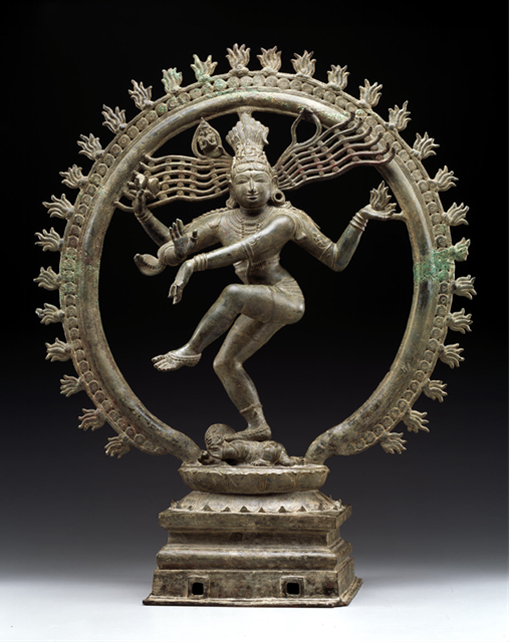
Shiva Nataraja, Chola dynasty, 11th century, Dallas Museum of Art, gift of Mrs. Eugene McDermott, the Hamon Charitable Foundation, and an anonymous donor in honor of David T. Owsley, with additional funding from The Cecil and Ida Green Foundation and the Cecil and Ida Green Acquisition Fund, 2000.377
.
As Loryn mentioned, many bronze sculptures were originally housed in Hindu temples. Each temple is dedicated to one particular god, and its primary function is to serve as the temporary home of that god. According to the Hindu belief system, an image of a god can be inhabited by the actual physical deity. This can only happen if the sculptor and priest have diligently followed the instructions of the sacred scriptures throughout the creation of the icon. This ability to invoke the actual presence of the god gives devotees the chance to interact with the deity directly. It is this interaction that lies at the heart of all Hindu worship, known as darshan, which means to see and be seen in return. This visual encounter, experienced by both devotee and deity, is the primary reason for temple visits.
The god usually resides within a stone icon installed in the inner sanctuary of the temple. But in order to make himself accessible to everyone, he is brought outside the temple walls for processions. Special sculptures are created solely for use in processions, usually made of bronze. The god leaves the inner sanctuary and inhabits the bronze sculpture after intensive ritual purification.
.
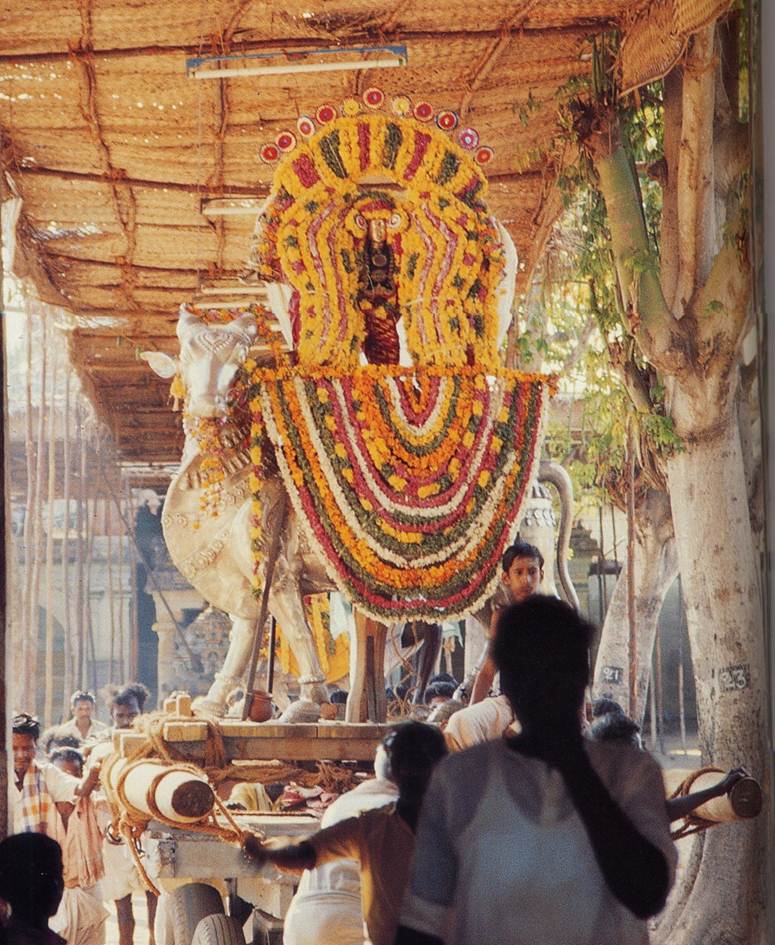
Photograph by John Guy, Shiva on his silver mount Nandi, 1993. Guy, John. Indian Temple Sculpture. V&A Publications: London, 2007.
.
The DMA’s bronze Hindu sculpture Shiva Nataraja was one of these sacred sculptures made for processions. It’s easy to identify because of the holes at the bottom of the platform. During a procession, poles were inserted into these holes so that temple attendants could easily carry it through town. Shiva Nataraja would have been so richly adorned with clothes, jewelry, flowers, auspicious unguents and liquids, that oftentimes the eyes were the only visible feature. However the eyes were also the most important feature. As long as the eyes could be seen through the heap of endless offerings, darshan could still be experienced by all present. To this day, Hindu processions are still very lively public events that involve the entire community and attract pilgrims from far and wide. Engaging all five of the senses with incense, flowers, music, dancing, hymns, and mantras, everyone actively participates in the religious festivities.
I hope this helps spark your imagination during your next visual encounter with a Hindu deity!
Hannah Burney
McDermott Intern for Teaching Programs and Partnerships
Facing Off
Published April 26, 2012 Curatorial , Exhibitions ClosedTags: Dallas Museum of Art, Face to Face: International Art at the DMA, painting, sculpture
Our exhibition Face to Face: International Art at the DMA is composed of never before seen pairs of objects drawn straight from the Museum’s collection. They are joined across cultures, great distances, and centuries of time to present an entirely new way to experience and celebrate a collection that is thrillingly diverse and over one hundred years in the making.
Organizing Face to Face required the collaboration of every member of our curatorial staff. Dr. Anne Bromberg, our curator of Ancient and Asian Art, spearheaded its sprawling course, spending weeks and weeks stalking the galleries, storage areas, and even her own colleagues to negotiate across departmental divides and ensure that what came to fruition was groundbreaking.
The result is a rare chance to see some of our “greatest hits” in lively and entirely new contexts. Visitors are welcome to speculate for themselves upon the many ways paired works might be related. I expect there are no right or wrong answers to these investigations, and that the discoveries one can have touring Face to Face are essentially limitless.
This is the first pair to welcome you to the exhibition. The composition of both works relied upon geometry and the stunning experience of pure color. The ceremonial textile from the Huari culture of Peru is beautifully composed of hundreds of blue and yellow macaw feathers—the yellow offering soft complement to the naturally iridescent shimmering of the blue.
Sanary, by American artist Ellsworth Kelly, presents a more complex pattern created from recycled paintings. No two colored squares repeat side by side, and like the feather panel, their summation elicits an explosive though carefully controlled punch of pure color. Their paired visual impact must be seen to be believed.
Of all the pairings, Dr. Bromberg has said this one raised the most eyebrows among her colleagues, but after placing them side by side for the first time during installation, it became clear that though derived from wholly different civilizations and made for completely different purposes, they were easily relatable as unique expressions of the very human desire to immortalize beauty through portraiture.
There’s much to be learned—things you may never have noticed before until you’re faced with this unique installation. This pair in particular enables audiences to reflect upon decisions the artists made in depicting their subjects abstractly. One might spend hours ruminating over their own visceral reactions to their striking features.

Eugène Delacroix’s Portrait of a Woman in a Blue Turban and Standing femail figure from the Democratic Republic of the Congo
Our Exhibition Design Coordinator, Jessica Harden, worked closely with Dr. Bromberg to create specific lighting, color, and spatial treatments for every pair in Face to Face. Its dynamic installation highlights the need to take one’s time in the exhibition. Here each artwork can be appreciated more intimately on its own terms.
This is particularly true with the pairing of Eugène Delacroix’s Portrait of a Woman in a Blue Turban and the standing female figure from the Luba peoples of Africa. Lengthy meditations over the artists distinct but relatable choices in depicting their subject’s tranquil and quintessentially feminine beauty are highly encouraged.
An entire case in Face to Face is dedicated to things that sparkle! And here it’s true that not all that glitters is literally gold. The DMA maintains a strong collection of decorative, functional, and ceremonial objects fashioned from precious materials by a variety of cultures for an even greater variety of reasons.
Face to Face’s broad representation (albeit in a small space) of the DMA’s expansive, internationally renowned collection is inspiring. The exhibition not only draws our attention to the mysterious nature of creating and studying art but also to that lesser realized art form of building a collection.
While exploring any museum, it’s easy to forget that a collection is built by people, and at the DMA these people have for over a century now nursed a vision that not only tells the history of art but also the story of our great museum.
Auriel Garza is the Curatorial Assistant for Ancient Art, Non-Western Art, and Decorative Arts & Design at the Dallas Museum of Art.
Teaching for Creativity: Boundaries, Rearranging, Persistence, and Creativity
Published January 26, 2012 Teaching for Creativity 2 CommentsTags: creativity, persistence, preschool, sculpture, teaching, Temple Emanu-El
One goal for the Teaching for Creativity series is to present the voice of other educators who can share insights and approaches to teaching that nurture creative behavior. Let me introduce you to Susan Stein, art teacher at Temple Emanu-El Preschool in Dallas, Texas and participant during the DMA’s 2011 Summer Seminar. Susan shares with us a sculpture exercise that supports the development of persistence and innovation in her young students.
There are five different shaped pieces of wood in front of each child.
“Can we trade pieces?” No.
“Can I have more pieces?” No.
“Can I just use some of the pieces?” No, you need to use all five pieces.
What’s with all the “no’s”? Isn’t creativity about making your own rules, about not staying in the lines, about “yes”? As it turns out, some measure of boundaries actually promotes creativity through problem solving. When every option is available, we have too many choices, and this often causes us to go off our path. When there are some rules, as is mirrored in life, we feel we have someplace to begin, a structure to hang onto, and can more readily achieve our goals. Without rules you get chaos, with too many rules you get dictatorship. Guidance with flexibility is the key.
The children arrange their pieces into sculptures without gluing anything together. A few children do their first sculpture in five seconds and announce that they are done. I nonchalantly knock their sculpture down and tell them to arrange a new sculpture in a different way. I don’t want them to get attached to their first idea. I look for each child to rearrange at least ten times. The more times they create arrangements, the more chances they take, and the more creative they get. They will eventually try placing big pieces on top of little ones, tilting pieces, and placing pieces to span a gap between two others. It is fascinating to observe!
Rearranging the same elements also lets you see the problem from different perspectives and in the process create new solutions. An example of this happens when you rearrange your Scrabble tiles and a word “magically” comes to you.
This process of rearranging again and again creates persistence. All innovative people cultivate persistence. You have to be willing to experiment with many ideas in order to find the ones that work best. Thomas Edison tried over three thousand filaments for his light bulb before he found even one that worked well.
After about fifteen minutes I announce that when they have an arrangement they are happy with, they can glue the pieces together. They are anxious to do so!
Many thanks to Susan for contributing to this blog and the dialogue about creativity. You can contact Susan at Susan@Art-Experiences.com for more information about this exercise and workshops that she conducts.
Read about another preschool classroom in the August 2011 Teaching for Creativity post by Shadan Price. What is happening in your learning environment? Share your ideas and experiences with us.
Nicole Stutzman
Director of Teaching Programs and Partnerships
Friday Photos: The Lovely Lady Godiva
Published July 15, 2011 Friday Photos ClosedTags: Anne Whitney, Art, Dallas Museum of Art, Marble, new acquisitions, sculpture
Every time I begin to say her name, I want to sing it, stretching it out with emphasis on the vowel sounds like the British Invasion duo Peter and Gordon. L-A-A-A-D-E-E-E G-O-D-I-I-I-V-A-A-A. The legend of Lady Godiva has inspired a broad spectrum of artists, such as the poet Alfred, Lord Tennyson, Disco group Boney M, as well as entrepreneur Joseph Draps, founder of Godiva Chocolatier. I, too, am inspired and have been happy to spend some time looking at a sculpture of Lady Godiva that was recently added to the DMA’s collection. This life-size, marble beauty was carved by nineteenth-century American sculptress Anne Whitney. In the sculpture, Lady Godiva appears to remove her belt, foreshadowing the famous naked ride she took on horseback through Coventry to protest her husband’s tax policies. Come take a look at this sculpture now on view in the American galleries!
- Lady Godiva, Anne Whitney, c. 1861-1864, Marble, Dallas Museum of Art, gift of Dr. Alessandra Comini in memory of Dr. Eleanor Tufts, who discovered the Massachusetts-backyard whereabouts of this long-forgotten statue and brought it to Dallas, 2011.8.
Nicole Stutzman
Director of Teaching Programs and Partnerships
How to Install a 27-Foot Sculpture
Published May 26, 2011 Behind-the-Scenes , Contemporary Art , Curatorial , Exhibitions , Installation ClosedTags: Dallas Museum of Art, James Lee Byars, sculpture
The installation of James Lee Byars’s Figure of Death was caught on camera last week in preparation for the exhibition, Silence and Time, which opens this Sunday, May 29, in the Barrel Vault and Quadrant Galleries.
[youtube=http://www.youtube.com/watch?v=Fpu3fx3ZkZg]
James Lee Byars, The Figure of Death, 1986, basalt (ten pieces), Private Collection, Dallas, TX, © James Lee Byars
Video by Ted Forbes, Multimedia Producer at the Dallas Museum of Art
Seldom Scene: A Fond Farewell to Dorothy Austin
Published January 31, 2011 American Art , Behind-the-Scenes , Collections 4 CommentsTags: American art, Dallas Museum of Art, Dorothy Austin, Dorothy Austin Webberley, sculpture, Texas Art
Texas sculptor Dorothy Austin passed away last week at the age of 100. Her work Slow Shuffle was featured in the 2009 Dallas Museum of Art exhibition All the World’s a Stage: Celebrating Performance in the Visual Arts, and this past year her sculptures Noggin and Male Torso were included in the exhibition Texas Sculpture. We were fortunate to have Dorothy Austin visit us in October 2009 with her family and wanted to share those memories with you.
